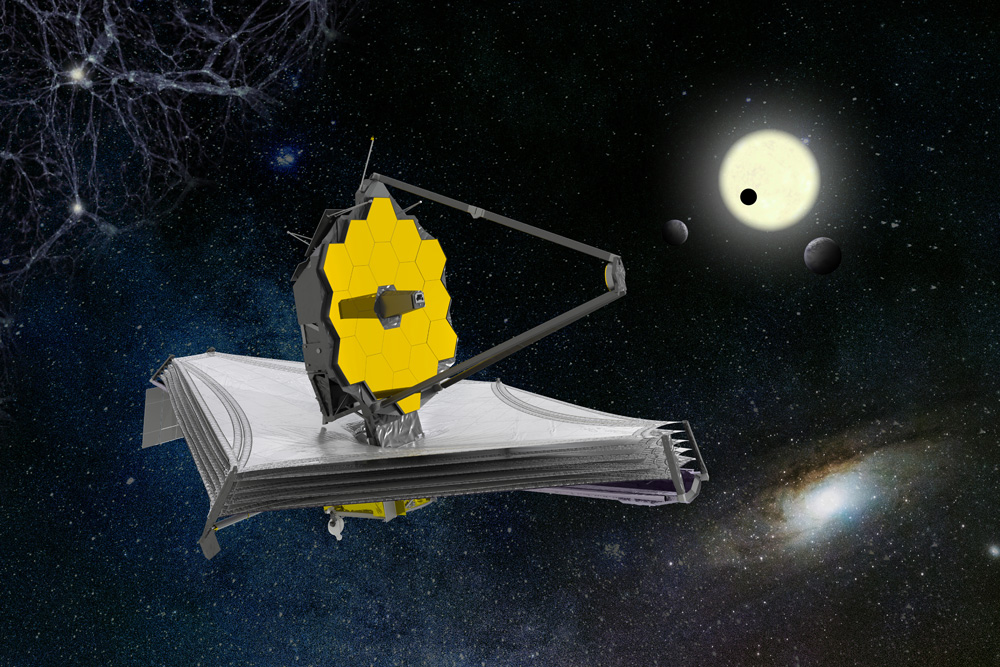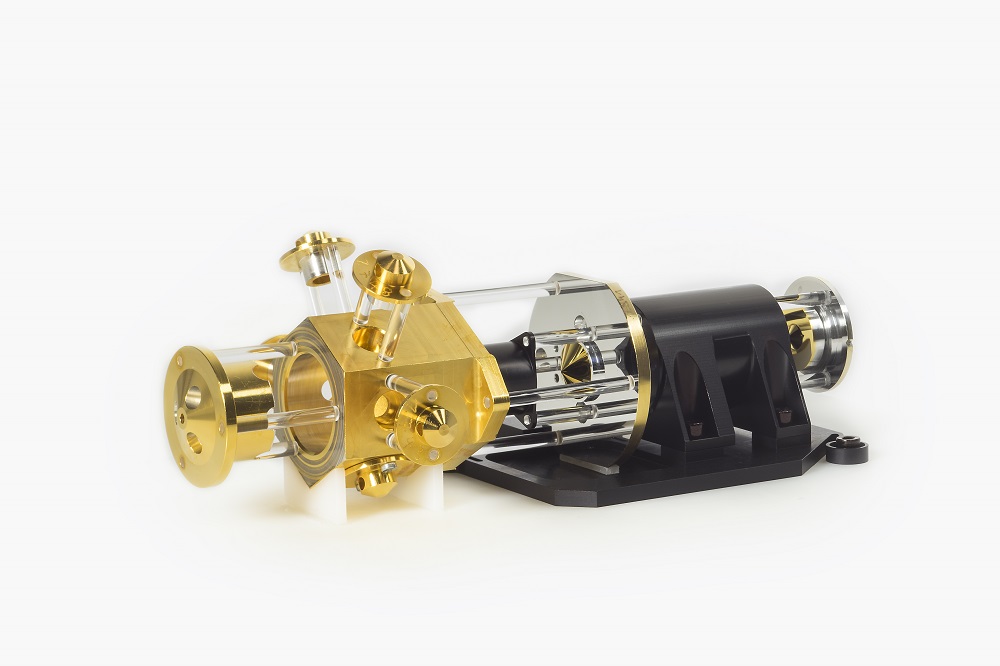Fraunhofer IOF developed high-precision mirrors for largest space observatory of mankind to date
James Webb Space Telescope launches with optics from Jena on board into space
It is the largest and most powerful space telescope ever launched into space: the James Webb Space Telescope. On December 22, it will begin its journey to the stars. The telescope is expected to provide groundbreaking insights into scientific remote sensing and the early history of the universe - and perhaps even discover life in space. On board: high-precision mirrors manufactured at the Fraunhofer Institute for Applied Optics and Precision Engineering IOF in Jena, Germany.
Update (Dec. 15, 2:36 p.m.): The launch of the James Webb Space Telescope has been postponed until Dec. 24 at the earliest
For more than ten years, astronomers have been eagerly awaiting the launch of the James Webb Space Telescope (JWST). It is to succeed the Hubble Space Telescope, which has been deployed in space since 1990, and provide an even deeper and more brilliant view of the universe than its prominent predecessor. On December 22, the time has finally come. James Webb will begin its journey to explore distant galaxies and provide answers to the big questions of the universe: What did the early universe look like, for example, and how did the first stars and galaxies form? But also: Is there life in the universe and are there planets that are habitable for us?
Fraunhofer IOF contributes high-precision mirrors for "MIRI" measuring instrument
To fulfill this fundamental research mission, there are a total of four scientific instruments on board the telescope. Two of them were contributed (partially) by the European Space Agency (ESA). Of these, the "Mid InfraRed Instrument" (MIRI) is equipped with mirrors that were manufactured and coated at Fraunhofer IOF in Jena.
MIRI is a measuring instrument consisting of a camera and a spectrometer. MIRI operates in the infrared range at a wavelength of 5 to 28 micrometers. Even small and faint objects can be analyzed in detail: The instrument is so sensitive that it can even see a candle on a Jupiter moon at a distance of roughly one billion kilometers from Earth.
The mirrors needed for this at the heart of MIRI were manufactured at Fraunhofer IOF. These ultra-precise mirrors were diamond-turned and coated at the Jena research institute. "Diamond turning is a powerful manufacturing process for producing planar and curved optical surfaces. Today, more than 10 years after the MIRI development, freeform surfaces, i.e., mirrors without symmetrical features, are successfully manufactured at Fraunhofer IOF using this technique," explains Dr. Stefan Risse, head of the department of Precision Optical Components and Systems at Fraunhofer IOF. His department manufactured the mirrors. "Using a combination of diamond turning and polishing processes, metal optics can be manufactured with such precision that a surface profile with accuracies in the nanometer range and with roughness in the sub-nanometer range, i.e., extremely smooth surfaces with roughness values of a few angstroms, are produced," Risse further explains.
Calibration of the "NIRSpec" instrument also with know-how from Jena
But MIRI is not the only instrument that got ready for the mission with the help of know-how from Jena. With the production of a Radiometric Calibration Spectral Source (RCSS), researchers from Jena were also involved in the realization of the "Near Infrared Spectrograph" (NIRSpec). NIRSpec functions as a kind of "super eye" of the space telescope. It is designed to detect radiation from the first stars and galaxies that can still be measured today, and to this end it analyzes light in the wavelength range from 0.7 to 5 micrometers.
Unlike the mirrors for MIRI, the RCSS itself is not going into space. Instead, the instrument was used on the ground to calibrate the NIRSpec in preparation for the mission. The calibration was performed with the aid of a tiny mirror located inside the calibration unit. It is a miniature on a scale of 1:4400, based on the six-meter-wide main mirror of the JWST, and made it possible to precisely adjust the spectrograph to the work ahead of it in space.
Launch of the space telescope shortly before 30th anniversary of Fraunhofer IOF
For Dr. Risse's department, participating in the James Webb Space Telescope was the first space project at that time. "It has now been over 15 years since we delivered the mirrors for MIRI to our client," recalls the department head. "But research and development projects for space research are becoming increasingly difficult due to the enormous requirements and the usually numerous cooperation partners." The James Webb Space Telescope was realized in close cooperation between the US (NASA), the European (ESA) and the Canadian (CSA) space agency. The MIRI instrument was specifically developed as part of a partnership between Europe and the USA.
After the long wait, the team at Fraunhofer IOF - together with friends of astronomy around the world - is now looking forward with even more anticipation to the long-awaited launch of the telescope on December 22. "It is a great honor for us to be involved in such a large-scale scientific project," comments Prof. Dr. Andreas Tünnermann, director of Fraunhofer IOF. "Our contribution is based on expertise that has been built up here in Jena since the institute was founded in 1992. We are now eagerly awaiting the first images that Webb will deliver. They will be views that reach deeper into the universe than ever before."
Infrared light provides a glimpse into the past
To find answers to its guiding research questions, Webb analyzes the light in the universe. More specifically, the light in the near to mid-infrared spectral range. To the human eye, light in this long-wavelength range is invisible. For science, however, analysis of light at this wavelength provides important insights by collecting nearly invisible photons in the universe. Light from the near-infrared range, for example, can reach through thick dust clouds to reveal emerging stars that are enveloped by them. This allows scientists to gain new insights into how galaxies form.
And even a glimpse into the past is possible with Webb. Since infrared light from distant galaxies travels through expanding space to reach us, mankind's largest space telescope to date can capture light from early stars of the first galaxies dating back to the formation of our universe. From this "far-traveled" light, insights can be gained into the early history of the universe after the Big Bang more than 13.5 billion years ago.

